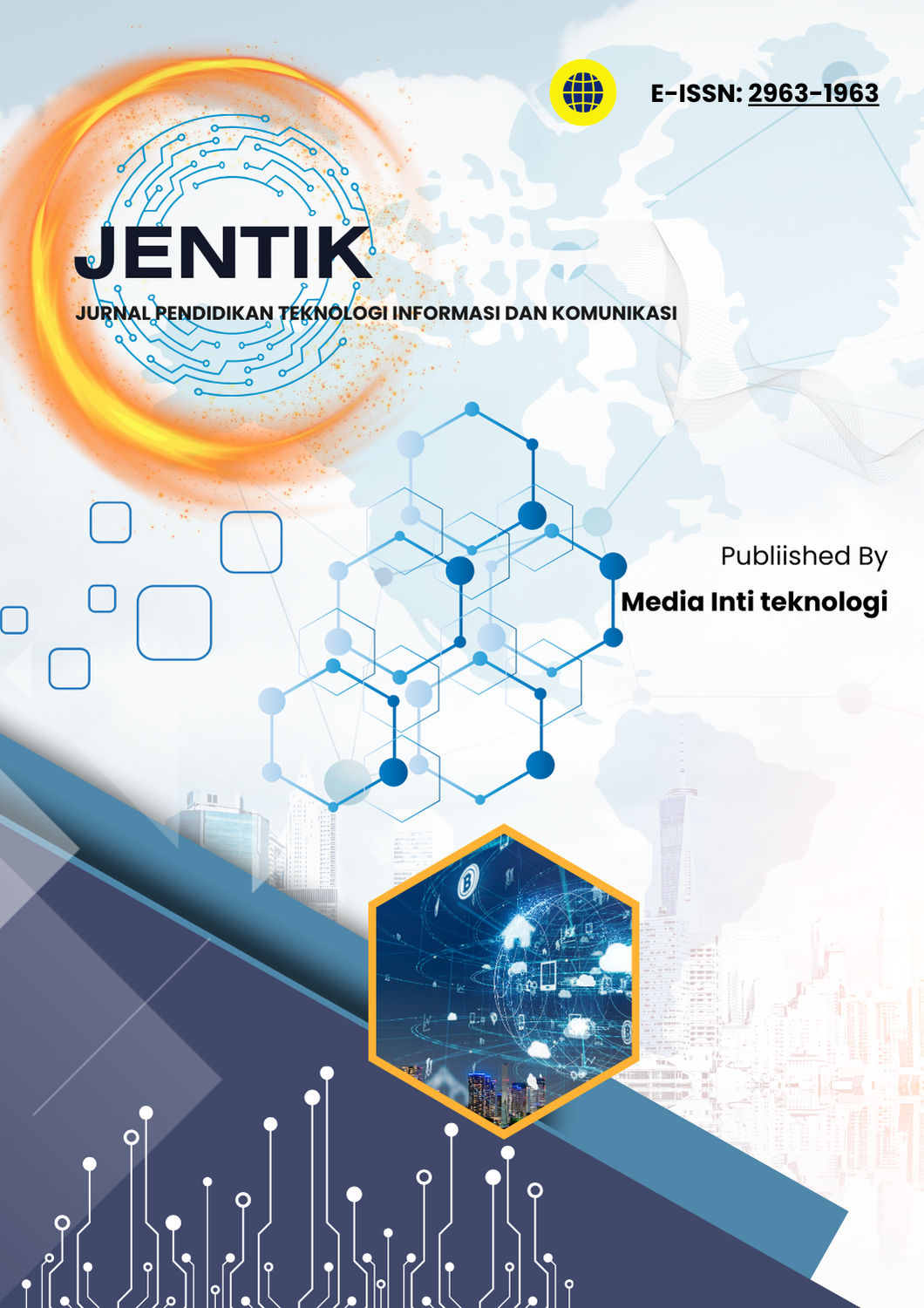Development of E-Modules Based on Blended Learning in Class II English Subjects at Student One Islamic School
Main Article Content
Abstract
This research aims to: (1) developing digital teaching materials in the form of class II English e-modules, (2) analyze product feasibility and (3) determine the effectiveness of product development. This research uses the Bord and Gall development model which is integrated with Rowntree. In feasibility testing, assessments were carried out by 3 experts, namely learning design experts, media experts and material experts. The test results for instructional design experts were 86.15%, media experts 90.67% and material experts 84.67%, all in the very appropriate category. The research results show that the quality of the developed E-module is good in one-to-one trials (83.33%), good for small groups (87.14%), and very good for large groups (90.43%). The results of the effectiveness test were carried out by comparing the results of the pretest and posttest scores to obtain t test results with df = 22 and a significance level of 5% or 0.05 is obtained ttable = 2.074. It is known that tcount > ttable is 3.8758 > 2.0738. It was concluded that there was a significant difference in the results of the pretest and posttest and the application of the E module based on Blended Learning for Class II English Subjects at Student One Islamic School was declared effective.
Downloads
Article Details
Copyright (c) 2024 Anugerahaning Meidy Arianto, Nurdin Ibrahim, Rudi Hartono

This work is licensed under a Creative Commons Attribution-ShareAlike 4.0 International License.
References
Agustian, M. A., Mayub, A., & Hamdani, D. (2024). Development of HOTS-Based Interactive E-Modules to Train High School Students’ Critical Thinking Skills on Harmonic Vibration Material. FINGER : Jurnal Ilmiah Teknologi Pendidikan, 3(1), 108–116. https://doi.org/10.58723/finger.v3i1.212
Ara, R. (2020). A Foreign Language or the Second Language: The Future of English in Bangladesh. International Journal of Language Education, 4(1), 81–95. https://doi.org/10.26858/ijole.v4i2.10206
Baker, J. A. S. B. (2022). Impact Of Using Technology In Education Environment. Journal of Pharmaceutical Negative Results, 13(9), 624–633. https://doi.org/10.47750/pnr.2022.13.S09.70
De Wilde, V., Brysbaert, M., & Eyckmans, J. (2020). Learning English through out-of-school exposure. Which levels of language proficiency are attained and which types of input are important? Bilingualism, 23(1), 171–185. https://doi.org/10.1017/S1366728918001062
Endayani, T. (2021). First Language Acquisition: Learning or Spontant. Islam Universalia: International Journal of Islamic Studies and Social Sciences, 3(1), 72–88. https://doi.org/10.56613/islam-universalia.v3i1.194
Hawa, S., Suryani, Susiani, R., Dauyah, E., & Majid, A. H. (2021). University students’ perception toward the use of the mother tongue in the efl classroom. Studies in English Language and Education, 8(3), 1094–1110. https://doi.org/10.24815/siele.v8i3.19870
Morales-Obod, M., Remirez, M. N. V., Satria, E., & Indriani, D. E. (2020). Effectiveness on the Use of Mother Tongue in Teaching the Concepts of Fraction Among Second Grade of Elementary School Pupilspts of fraction among second grade of elementary school pupils. Journal for the Education of Gifted Young Scientists, 8(1), 291–304. https://doi.org/10.17478/JEGYS.637002
Noviyenty, L., & Putri, M. I. (2021). Mother Tongue Interference Towards Students’ English Pronunciation: A Case Study in IAIN Curup. In Proceedings of the International Conference on Educational Sciences and Teacher Profession (ICETeP 2020). https://doi.org/10.2991/assehr.k.210227.049
Omidi, M., Khalaji, H. R., & Mahmoudi, K. (2023). English as a Foreign Language Teachers ’ Perceptions of Their Unique la n- guage acquisition device Construction in Second Language Acquisition Process : Grounded Theory. Journal of Language and Translation, 13(2), 67–80. https://doi.org/10.30495/ttlt.2023.702735
Pasaribu, G. R., Daulay, S. H., & Saragih, Z. (2023). The implementation of ICT in teaching English by the teacher of MTS Swasta Al-Amin. English Language and Education Spectrum, 3(2), 47–60. https://doi.org/10.53416/electrum.v3i2.146
Sudarmo, S. (2021). importance of speaking in English as a foreign language between skillful and thoughtful competencies: studying sociolinguistics perspectives. Linguistics and Culture Review, 5(S1), 113–124. https://doi.org/10.21744/lingcure.v5ns1.1321
Sugiyono. (2019). Metode Penelitian Kuantitatif, Kualitatif dan Rnd. ALFABETA.
Widyorini, M. D., Sahasti, J. P., & Sumarlam. (2018). Language Extension in Children Of 2-3 Years Age Through Methods Of Serving In PAUD Nur Insani Piyaman , Wonosari , Gunungkidul. MEDAN MAKNA:Jurnal Ilmu Kebahasaan Dan Kesastraan, 16(2), 208–218. https://doi.org/10.26499/mm.v16i2.845
Wiranda, R., Petrus, I., & Vianty, M. (2020). The Use of Ict in Learning Process By Vocational Teachers of English. English Review: Journal of English Education, 8(2), 283–290. https://doi.org/10.25134/erjee.v8i2.2617
Wulandari, D., Risdianto, E., & Setiawan, I. (2022). Development of E-Module Materials of Quantities and Units Using Canva to Increase Students’ Interest in Learning. JENTIK : Jurnal Pendidikan Teknologi Informasi Dan Komunikasi, 1(1), 25–34. https://doi.org/10.58723/jentik.v1i1.27



 Anugerahaning Meidy Arianto
Anugerahaning Meidy Arianto
